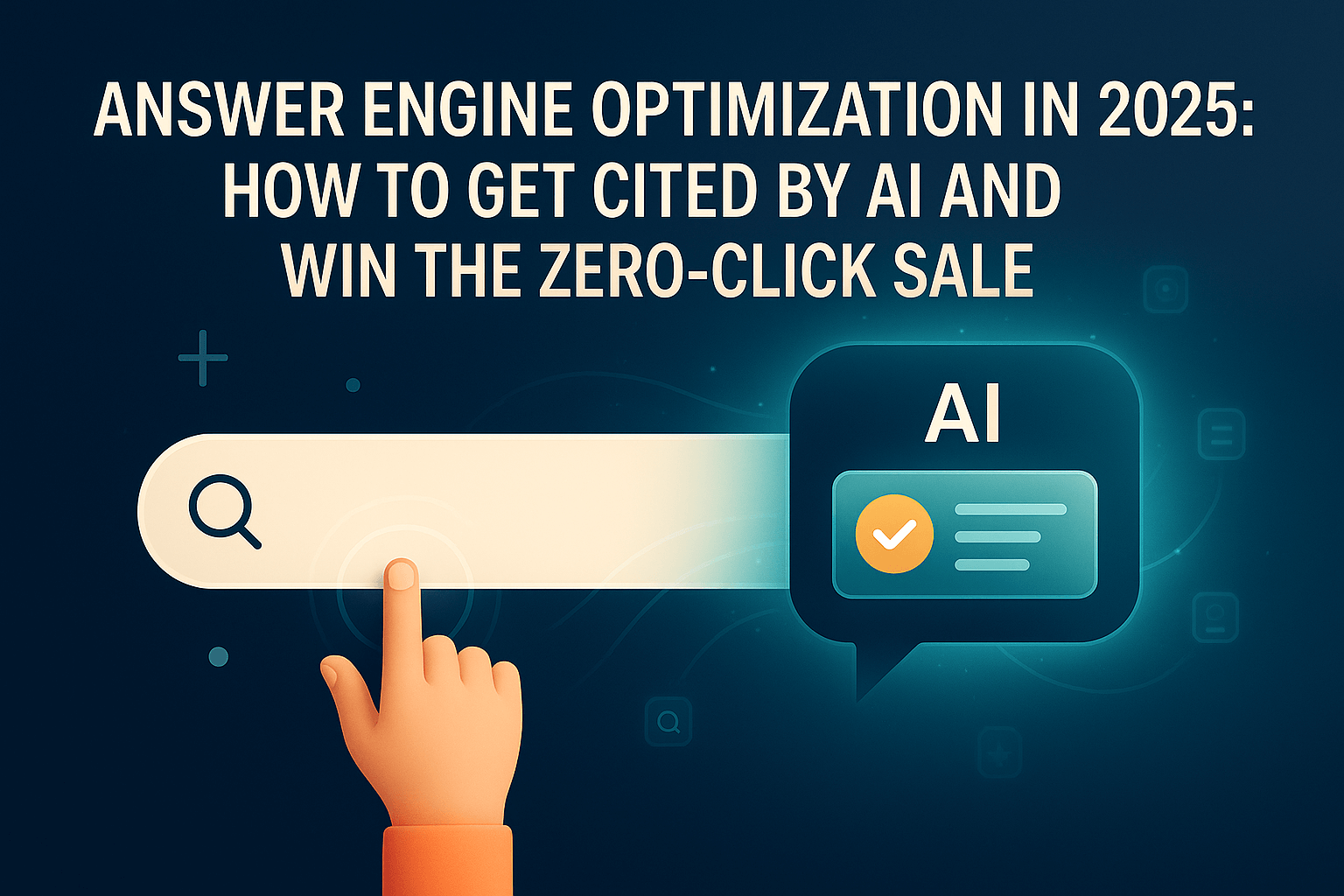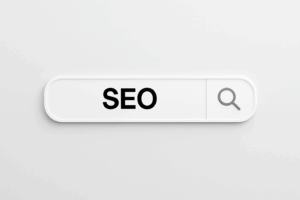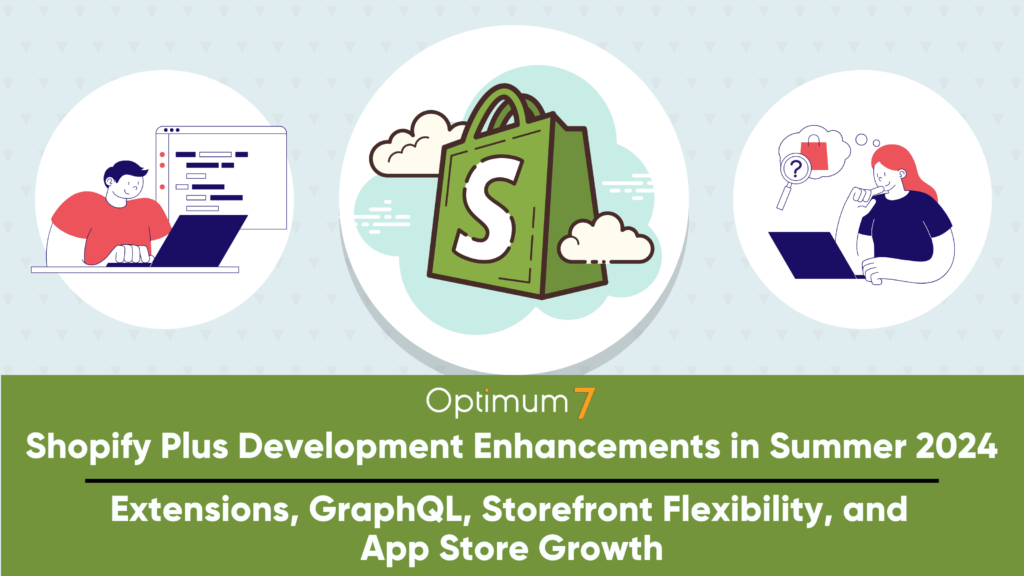Welcome to the Zero-Click World
You didn’t lose rankings. You lost the reader.
Because the reader isn’t a person anymore, it’s an interface, an LLM.
It doesn’t scroll. It doesn’t browse. It doesn’t open tabs, read a few intros, weigh the options, and then click your link. The AI doesn’t think like a buyer. It thinks like a compiler.
When someone types “best replacement motor for a 3-phase compressor under 20 HP,” ChatGPT doesn’t visit your product page or blog post. Gemini doesn’t skim your article. Claude doesn’t browse your catalog. What do they do instead?
They break the prompt into atomic nodes:
- 3-phase
- compressor
- replacement motor
- horsepower constraint
- purchase intent
Then they scan their knowledge base, including embedded content, indexed links, structured data, and citations, for tight, extractable, high-confidence content blocks that answer those nodes.
If your content has a 50-word paragraph that defines the motor’s compatibility in plain terms, with supporting schema? You might get lifted.
If not? You vanish, silently, harshly, and completely.
And that’s the problem: most brands are still writing for a reader that behaves like a person. That person is gone. The machine is the reader now, and the machine doesn’t want a pitch, a narrative, or a CTA. It wants a building block.
If your sentence can’t be lifted and cited within 0.2 seconds, the model skips you. No penalty. No ranking drop. Just absence.
You didn’t get outranked.
You didn’t lose authority.
You just weren’t written in the language the machine could understand.
And now, it’s quoting someone else.
This is where most B2B, ecommerce, and technical brands are bleeding visibility. Not because they don’t have the knowledge. But because that knowledge is buried in a format, not structured for lift.
So here’s the shift:
You’re no longer competing for clicks.
You’re competing for citations.
And most of your competitors don’t even know the game has changed yet.
The Two-Layer Content Model: Quote First, Detail Later
Most brands are still writing for a funnel that no longer exists.
They open with a hook. Tell a story. Build up to the answer. Lead with narrative. Then offer value. That model used to work, back when the reader was human.
But in 2025, LLMs don’t reward patience. They reward precision.
That’s why every piece of content you publish, blog, FAQ, glossary, even your product page, needs to follow a Two-Layer Content Model:
Layer 1: The Extractable Answer
This is your shot. The 40–60-word block under every subheader needs to function like a quote from a subject matter expert.
It’s not an intro. It’s not a teaser. It’s a resolution.
Example (before):
“Let’s talk about B12 and energy. This underrated vitamin plays a crucial role in how your body feels and functions throughout the day…”
Example (after):
“Vitamin B12 helps convert carbohydrates into glucose, which your body uses for energy. A deficiency can lead to fatigue, brain fog, and poor concentration.”
That second version gets cited. The first one gets skipped.
Layer 2: The Depth
Once you’ve delivered the quote block, then, and only then, do you earn the right to go deeper.
Expand with context, nuance, comparisons, studies, testimonials, internal links, or product tie-ins. Human readers may still reach this layer. But only after the AI has chosen you.
This structure isn’t just about clarity. It’s about eligibility. If your content doesn’t pass Layer 1, it doesn’t get processed at all.
And in industries like manufacturing, chemicals, supplements, finance, or compliance, where trust depends on expertise, failing Layer 1 means your real value never reaches the surface.
How This Shows Up in Industrial Ecommerce
Let’s say you sell replacement bearings for food-safe environments. A buyer (or AI assistant) asks:
“What kind of bearing is best for high-moisture environments in food processing?”
If your PDP has:
“Our 6000 series stainless-steel bearing resists corrosion in wet, washdown environments and meets FDA compliance for food-grade equipment…”
You’ve got a quote-ready Layer 1.
Then your page can dive into details: RPM specs, lifespan, compatibility with specific brands of equipment.
This model makes your content citable, trustworthy, and human-friendly, in that order.
Structuring Content for AI Extraction from Search Results, Not Just SEO
Most content today is still written for Google’s 2018 brain — one designed around search algorithms, not answer engines. Keyword targets. Long intros. Evergreen anchors. Internal links wrapped around exact-match phrases. And yes, that can still help ranking.
But ranking is no longer the point, not in a zero-click trend where presence beats position.
AI systems like Gemini, Perplexity, Copilot, and ChatGPT don’t rank links. They scan and assemble. They don’t crawl your site with the intent to index everything. They extract only what’s useful for a given prompt, and they ignore the rest.
So what makes content useful for AI extraction?
1. Semantic Headers that Mimic Prompts
Instead of:
- “More Information”
- “Other Benefits”
- “Final Thoughts”
Use:
- “What Are the Safety Regulations for Class 2 Forklifts?”
- “Which Hydraulic Fluids Are Compatible with CAT 950H Loaders?”
- “Does Stainless Steel Rust in Wet Environments?”
These headers are questions the AI can match to user prompts. This helps you show up in synthesized answers even when your URL has zero clicks.
2. Lead with a Declarative, Quote-Worthy Sentence
Under each semantic header, the first 1–2 sentences should:
- Answer the question directly
- Use industry-standard terminology
- Be self-contained (no intro required)
Bad:
“Many manufacturers offer a variety of approaches to moisture resistance in metals. Let’s look at how stainless steel performs…”
Good:
“Stainless steel resists rust in most wet environments due to its chromium oxide layer, but can still corrode in salt-heavy or acidic conditions.”
The good version is liftable. It resolves the query without needing more context.
3. Short Paragraphs, Clean Structure
Use 40–60-word paragraphs. Bold subheaders. Avoid nested bullets unless required. Treat your content like it’s feeding a parser, not a reader.
The AI doesn’t need formatting for style; it needs structural clarity.
4. Inline Definitions and Compatibility Callouts
If your product is meant for a specific machine, model, or application, don’t bury that in paragraph four. Call it out clearly:
“Compatible with all John Deere 35G mini excavators manufactured after 2020.”
That kind of content makes it into Gemini and Copilot responses when users ask:
“Which hydraulic kits fit a 2021 John Deere 35G?”
Because the AI isn’t guessing, it’s matching structured certainty to fragmented queries.
Using Schema Markup to Shape Search Engine Results and Talk Directly to the Machine
If content structure is the grammar of machine-readable writing, then schema markup is the translation layer.
Schema tells AI systems what each section of your content represents, not just what it says. And in the answer economy, that metadata often determines whether your brand is even considered for inclusion in the response.
Why Schema Now Matters More Than Ever
Large language models (LLMs) don’t “crawl” in the traditional sense. They scan and parse structured signals. The more context you provide — about the type of content, who wrote it, when it was last updated, and how it relates to known concepts — the more likely you are to be trusted.
Schema doesn’t improve your ranking. It makes you quotable.
And in B2B, industrial, and technical verticals, where clarity and domain authority matter more than style, schema can elevate the one sentence that gets you cited.
1. FAQPage — The Fastest Path to Being Quoted
One of the most overlooked schema types is also one of the most powerful: FAQPage. It’s what tells an LLM, “Here’s a clearly phrased question, followed by a clean, authoritative answer.” That matters more than ever. Because when a buyer asks a system like Perplexity or Gemini something like “Can I use this hydraulic filter with a Komatsu PC210?”, they’re not looking to browse — they’re looking for a resolution. If your content answers the question clearly and is wrapped in the right schema, it becomes quotable.
We’ve seen clients win prime placement in AI-generated answer summaries just by reformatting old blog sections into tight Q&A blocks. No extra content. Just structure. This works beautifully across product support articles, buyer education content, and even internal glossary hubs. The key is keeping your answers short — 40 to 60 words is ideal — and phrased for clarity, not persuasion. This isn’t about being clever. It’s about being extractable.
2. HowTo — For Every Task Your Buyer Googles (But Never Clicks)
If your product requires installation, configuration, maintenance, or any sort of technical setup, you need the HowTo schema in place. Most industrial suppliers don’t think of themselves as content producers, but they are. Every PDF guide, every process walkthrough, every tech support page… all of that is content that AI wants to ingest.
When someone asks “How do I install a replacement auger shaft?” or “How do I flush coolant from a John Deere 310L?”, the model isn’t going to scan your whole page. It’s going to hunt for a structured list of steps that begins with “Turn off the machine and disconnect power,” and ends with “Restart the engine and test for leaks.” If you’ve wrapped those steps in HowTo schema, you might win the answer without the user ever touching your site — and that’s the goal.
We’re seeing incredible ROI here in heavy machinery, field service parts, and even software integrations (think ERP sync guides or API walkthroughs). The machines don’t want a blog, they want a clean instruction set.
Schema isn’t just for rankings — it powers the structured snippets, featured answers, and knowledge panels that AI systems rely on to build trust.
3. Product — Structure Your Specs or Get Skipped
This one’s non-negotiable for ecommerce: Product schema is what lets AI understand what you’re actually selling. Most BigCommerce brands technically have some product schema on their PDPs, but it’s often shallow — just price, SKU, and maybe a review rating. That’s not enough.
What matters now is depth. Compatibility. Core specs. Manufacturer details. Dimensional data. All tagged properly, not buried in a product description. When someone asks “What’s the best high-flow, 10-micron hydraulic filter for CAT D6R?” they’re not going to read six pages. The model is going to search for a structured object that matches that query — and if your catalog isn’t exposing that data in schema, you won’t get surfaced.
A pro tip here: use additionalProperty to map specific specs. Think “filtration rating,” “operating temperature range,” “seal material.” These are the kinds of fields LLMs can latch onto when parsing product recommendation prompts.
4. Article, Author, DateModified — Trust Is Structured Too
Most people assume that AI citations are purely about relevance. But trust plays just as big a role — and that’s where Article, Author, and DateModified schema become critical. These tags don’t just label your content. They certify it. They say: this post was written by a real human, on this date, and it’s been updated recently.
That’s a powerful signal in sectors like industrial safety, compliance, healthcare, or finance — anywhere accuracy and recency matter. If you’re writing articles that explain OSHA requirements, ISO standards, or machine calibration protocols, you need to show that someone with authority wrote it, and that it’s still current. Otherwise, the AI will default to whatever source is fresher or more clearly structured, even if your content is better.
We’ve helped clients get re-cited in Gemini and Claude just by adding a DateModified tag to evergreen articles. Not because anything changed — just because the AI could now tell it was still valid.
5. DefinedTerm and MedicalEntity — Own the Definitions That Drive the Query
In any technical vertical, definitions matter. “What is FIP in piping?” “What does L-Theanine do?” “What’s the difference between marine and bovine collagen?” These are the kinds of questions that buyers ask in research mode, and the brands that show up to answer them get embedded early in the trust loop.
To win those citations, you need to make your definitions look like definitions. That means using either DefinedTerm (for industrial, technical, and manufacturing contexts) or MedicalEntity (for supplement, health, and diagnostic products).
We’ve had clients in the industrial filtration space create simple, 60-word definitions of terms like “micron rating,” “bypass valve,” or “differential pressure,” wrap them in the right schema, and suddenly outrank academic sites in AI-generated snippets. It wasn’t the best content. It was the best structure.
This is especially powerful if you build a glossary hub — a structured, schema-wrapped repository of all your internal language. If you don’t define your own terms, someone else will. And they’ll get quoted, not you.
Turning Your Industrial Glossary into a Citation Engine
You don’t need 100 new blog posts to win visibility in AI-driven search. You need 50 clean definitions.
In technical and industrial markets, most high-intent AI queries start with three words:
“What is ?”
That’s your opening. And if you’re not the one defining the vocabulary of your industry, your competitor is. AI systems will quote whoever structured the answer best, not necessarily who has the deepest expertise.
Why Glossary Content Wins
LLMs like ChatGPT, Perplexity, Gemini, and Claude prioritize concise, confident, and current definitions. They’re not assembling stories, they’re assembling answers. A tightly written glossary entry provides:
- A clear node for the AI to grab
- A trusted response format for instant synthesis
- A timestamped, structured signal for source selection
Example Prompt
When a user types:
“What is a variable displacement piston pump?”
Gemini might respond:
“A variable displacement piston pump is a hydraulic pump that changes flow rate by adjusting the angle of its swashplate, enabling energy-efficient operation based on system demand.”
Now ask yourself: Is that your quote? Or did someone else write it better, faster, and more extractable?
How to Build a Citable Glossary
If you’ve ever searched for a definition online — something like “What is a servo valve?” or “How does a torque converter work?” — and seen a quick, one-sentence answer in Gemini or Perplexity, you’ve already experienced the power of glossary-style content. But here’s what most B2B brands still miss: those answers aren’t chosen randomly. They’re structured to be chosen.
And in 2025, that structure is the difference between being cited and being skipped.
So, how do you actually build a glossary that gets lifted into AI answers, one that puts your brand at the center of the buyer’s research journey, even before they know your name?
Let’s break it down, not like developers, but like strategic operators designing visibility.
1. Make Your Glossary a Destination — Not a Graveyard
Most companies scatter definitions across blog posts, product pages, or support docs. One explanation is buried in paragraph four, another at the bottom of a FAQ. That’s a recipe for invisibility.
To build a glossary that LLMs can actually lift from, you need to centralize it. That means dedicating either a standalone Glossary page or an entire subdomain like “learn.brand.com” or “brand.com/glossary”. Each term should have its own page or clearly separable anchor block.
This is what makes your glossary indexable, scannable, and consumable by machines.
2. Write Headings Like the Questions Your Buyers Ask
This is where most brands still sound like textbooks.
Don’t label your page with vague headers like “Technical Terms” or “Glossary Entries.” Instead, make every glossary term a prompt-style H2, exactly how a real person would ask it.
Examples:
- “What Is a Servo Valve?”
- “How Do Torque Converters Work?”
- “What’s the Difference Between NPT and BSP Threads?”
LLMs use those heading structures as intent signals. The clearer and more question-like your headings, the higher the chance your page will be chosen as the source of truth.
3. Lead With the Quote You Want AI to Use
Forget the fluff. When someone, or some AI, lands on your glossary term, the first 1–2 sentences need to deliver the answer.
This is what we call a “lift block”: a short, declarative, confidence-scoring paragraph that defines the term in 60 words or less. Think like a dictionary, not a marketer.
Example:
“A servo valve is an electrohydraulic device that controls fluid flow with high precision based on an electrical input signal. It’s used in applications requiring fast, accurate motion control, such as aerospace actuators and robotics.”
Notice the tone? No sales pitch. No qualifiers. Just clarity.
That’s what Gemini lifts. That’s what Claude repeats. And that’s what gets your brand embedded in a conversation before the buyer ever visits your site.
4. Wrap It in Schema — Or It Doesn’t Count
Once the content is there, structure it. We’re not talking about just HTML headers; we mean semantic metadata that machines can parse.
For glossary entries, we recommend using:
- DefinedTerm for technical/industrial terms.
- FAQPage if your glossary is organized as Q&A.
- Article, Author, and DateModified schema if you want to build long-term trust and show recency.
This schema isn’t just a ranking tool; it’s a translation layer between your expertise and the LLM’s language. Without it, your content might be visible… but it won’t be usable.
5. Link Glossary Terms to Products, Applications, and Guides
One of the most strategic — and most underused — elements of glossary strategy is internal linking. Don’t let your glossary float in isolation. Tie each term to your commercial intent.
If you define “hydraulic pump displacement,” link that term to:
- A product category page for hydraulic pumps.
- A comparison guide on flow rates.
- A support article for CAT engine compatibility.
This builds a web of relevance that helps AI models understand your domain authority — and helps your human visitors convert faster once they’re in discovery mode.
Always in the Room
The goal of a glossary isn’t to get someone to click. It’s to get your definition chosen.
If Gemini, Perplexity, or Claude says:
“According to , a torque converter is a fluid coupling device that transmits rotating power using hydraulic pressure between engine and transmission…”
You’ve already won. The buyer hears your name. The assistant trusts your definition. And the next click — if it happens at all — is pre-qualified.
In the answer economy, defining the term means owning the moment.
Glossary content is no longer filler. It’s prime real estate for machine citation.
Build it with care. Structure it with precision. And make sure it speaks the language of the interface, not the ego of the brand.
Formatting Technical Content for Copy-Paste by AI
AI doesn’t want to interpret your content. It wants to copy it — sentence, stat, or definition — and paste it into its answer engine with full confidence. That’s why formatting is everything.
You’re not writing for humans first anymore. You’re writing for a reader who doesn’t scroll, skim, or infer. It parses and extracts.
So the question becomes:
Is your content extractable — or invisible?
Copy-Paste-Ready Means Structured for Lift
An AI system like Claude or Gemini won’t reword your insights. It will either quote you verbatim or ignore you entirely. That means the structure of your writing must match the AI’s needs.
Here’s what that looks like:
| Element | Best Practice | Why It Matters |
| Headers | Use full-sentence prompts (e.g. “What are the benefits of hydraulic filters?”) | AIs scan headers as semantic intent signals |
| Paragraph Length | 40–60 words max | Mimics the optimal block size for LLM extraction |
| Opening Sentences | Write the answer first | Machines expect resolution before context |
| Bullet Points | Use clean formatting and label each point clearly | Bullets often get lifted directly by Gemini/Perplexity |
| Tables | Label rows/columns with absolute clarity | Tables are often scraped for structured output |
| Internal Anchors | Link glossary terms and product pages | Boosts topical authority and link-based context |
| Schema | Wrap the block in FAQPage or Article schema | Signals extractability and trust source |
A Real-World Comparison
Let’s say you have two product pages:
- Page A begins with:
“At Acme Hydraulics, we’re proud to offer innovative fluid control solutions engineered for maximum uptime.” - Page B begins with:
“A pressure-compensated flow control valve adjusts flow automatically based on pressure variations, ensuring consistent hydraulic performance.”
Guess which one gets quoted in Gemini?
The first is branding. The second is resolution.
Clean Inputs = High Confidence = Citation
Think of AI like a legal assistant preparing a briefing. It doesn’t want nuance or tone. It wants structured certainty. The more extractable your content, the more you get lifted.
You can still have storytelling and brand personality — just don’t lead with it. Let the resolution come first. The story can follow.
New KPIs — Measuring Presence With Zero Click Searches
In the answer economy, clicks are optional — but presence is not. You could be driving fewer sessions and still winning more deals. The difference? Whether AI assistants are mentioning your brand before the buyer even reaches your site.
Traditional SEO metrics like bounce rate, time on page, and even keyword rank are becoming lagging indicators. The true value now lies in measuring:
- Visibility inside the interface
- Citation frequency
- Post-exposure brand recall
Here’s how to shift your measurement model to track what matters.
Core Metrics for AEO Performance
| Metric | What It Tells You | How to Track It |
| AI Citations (Brand Mentions) | Whether your brand is referenced in AI answers | Use tools like PromptLayer, Gemini Overviews, Bing Copilot logs |
| Content Lift Rate | % of pages that show up in LLM answers | Manually prompt LLMs or use monitoring scripts |
| Branded Search Lift | Increase in direct searches after being cited | Compare GA4 branded search volume pre/post exposure |
| Conversion Per Mention | Track conversions tied to AI-assisted discovery | Tag CRM entries with “assistant exposure” where possible |
| Quote Indexing Speed | Time between publishing and citation | Run prompt tests on structured glossary entries and FAQs |
Structured Content = Brand Visibility
AI isn’t just stealing traffic. It’s hungry for your knowledge, and it’s already consuming it. The question is:
Are you giving it structure willingly, and getting paid for it, or letting someone else rephrase your insights and profit instead?
You don’t need to become an AI company to monetize the interface.
You just need to repackage your content as structured, citable, trusted data.
Turn Your Expertise Into Ingestible Assets
Every B2B brand already has assets with IP value:
- Product glossaries
- Technical whitepapers
- Regulatory breakdowns
- Internal SOPs
- Buyer guides
- Specification tables
- Onboarding manuals
Right now, those live as unstructured blog posts, static PDFs, or buried internal decks. To AI, they’re noise.
But refactor them into machine-readable formats, and they become:
| Asset Type | Monetizable Format | Distribution Opportunity |
| Regulatory guides | JSON schema + timestamped glossary | AI copilots in legal, pharma, or manufacturing verticals |
| Product compatibility charts | Dynamic feeds with structured tables | Licensing to procurement platforms or AI plugins |
| Technical definitions | FAQPage schema + glossary hub | Embedded into Gemini, Perplexity, or GPT plugins |
| SOPs / Process steps | HowTo schema or internal knowledge base | Ingested by internal LLMs or sold as a GPT data source |
AEO Visibility Toolkit: Structure for the Lift
You don’t need more content, you need better scaffolding. This checklist and schema guide will help your team translate expert insight into machine-readable content that earns citations, not silence. Use this toolkit to audit your current assets and prep every new page for the interface era.
Quick Checklist: Is Your Content Quote-Ready?
- Every H2 reads like a user prompt (e.g. “What is X?”)
- First 1–2 sentences answer the question directly
- Paragraphs are 40–60 words max
- Industry terms are defined inline or linked to glossary
- Schema markup applied (FAQPage, Article, Product, etc.)
- DateModified and Author tags present on key pages
- Internal links connect definitions to products or guides
- Glossary terms centralized in an indexable, scannable hub
Schema Markup Reference Table
| Use Case | Schema Type | Where to Apply |
| FAQs / Q&A Blocks | FAQPage | Blog posts, glossary, support docs |
| Technical How-To Guides | HowTo | Installation guides, SOPs, support content |
| Product Specs & PDPs | Product + additionalProperty | Ecommerce PDPs |
| Definitions / Glossary Terms | DefinedTerm | Glossary entries, technical explainer pages |
| Regulatory / Expert Content | Article + Author + DateModified | Compliance, legal, standards guides |
Quote-Readiness Self Test
| Element | Poor | Good |
| Header | “More Info” | “What Are the Benefits of Stainless Steel 304?” |
| Opening Sentence | “In this post we’ll explore…” | “Stainless steel 304 resists corrosion due to its high nickel content.” |
| Bullet Format | Nested, unlabeled, inconsistent | Labeled, flat, and specific |
| Glossary Entry | Buried mid-paragraph | Standalone, 60-word max, wrapped in DefinedTerm |
| Schema Usage | Missing or misapplied | Targeted, clean, and page-relevant |
Citations are no longer earned through backlinks — they’re earned through clarity. When your content speaks the language of the machine, your brand becomes the default source. Build once. Structure smart. And be the quote that gets copied, not the page that gets skipped.
You Don’t Need More Content — You Need a New Interface Strategy
This isn’t about writing more. It’s about becoming visible in the only space that matters now: the answer layer. If your content isn’t structured to be quoted — with clarity, schema, and prompt-ready headers — it won’t be seen. Not downranked. Not dismissed. Just bypassed.
And when that happens, your best expertise goes unheard.
Ask the Only Question That Matters Now
If your ideal customer opened Gemini, Copilot, or ChatGPT tomorrow and asked a question about your category, would your brand be in the answer?
Not your homepage. Not your whitepaper. The answer.
Because that’s where the trust is built now, in the moment the system selects what to cite.
If it’s your competitor who gets quoted—faster, simpler, more structured—then you’re not just losing traffic. You’re losing mindshare before the sales cycle even begins. You’re being left out of the conversation completely.
This isn’t about SEO anymore. It’s about answer-layer visibility. And the brands that are structured for it will be remembered. Everyone else gets quietly erased.
We can show you exactly where you stand.
Contact us at Optimum7.












